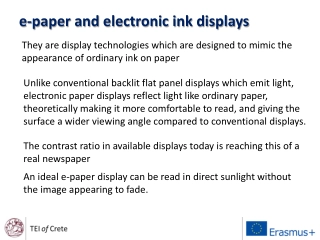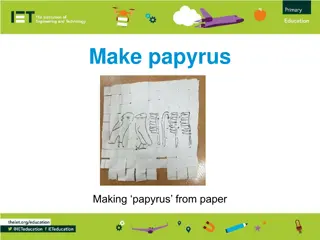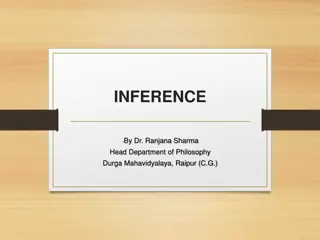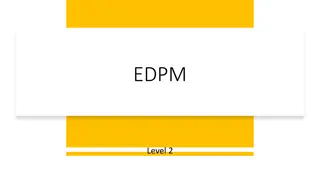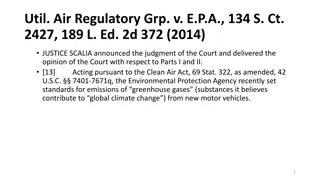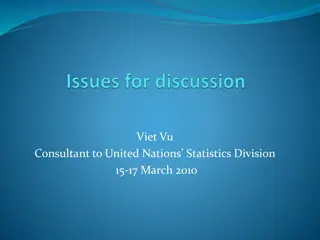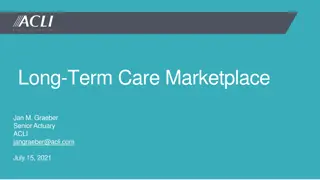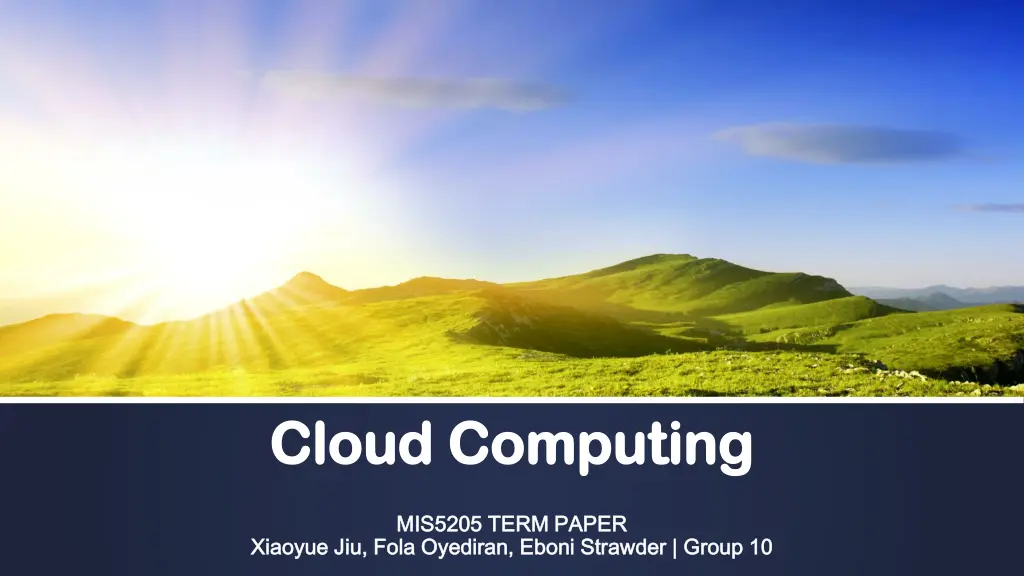
Understanding Cloud Computing Architectural Layers and Business Benefits
Explore the concept of cloud computing, including architectural layers such as SaaS, PaaS, and IaaS, regulatory compliance considerations, and the numerous business benefits of cloud technology like cost reduction, automatic updates, enhanced security, collaboration, and time savings.
Download Presentation

Please find below an Image/Link to download the presentation.
The content on the website is provided AS IS for your information and personal use only. It may not be sold, licensed, or shared on other websites without obtaining consent from the author. If you encounter any issues during the download, it is possible that the publisher has removed the file from their server.
You are allowed to download the files provided on this website for personal or commercial use, subject to the condition that they are used lawfully. All files are the property of their respective owners.
The content on the website is provided AS IS for your information and personal use only. It may not be sold, licensed, or shared on other websites without obtaining consent from the author.
E N D
Presentation Transcript
Cloud Computing Cloud Computing MIS5205 TERM PAPER MIS5205 TERM PAPER Jiu, Fola Fola Oyediran, Eboni Oyediran, Eboni Strawder Xiaoyue Xiaoyue Jiu, Strawder | Group 10 | Group 10
Cloud Cloud Computing Computing What is the cloud? In general, the cloud is the concept of remotely hosted IT services, termed cloud apps, provided by a supplier. These suppliers are called cloud providers. Typical cloud apps offered by cloud providers include email, calendar, documents, online storage, sales, customer service, and more. Example of many cloud providers include companies such as Amazon, Google, 37signals, Intuit, Microsoft, and Box. A selection of the top cloud apps in the market today include Cloud Drive, Google Apps for Business, Skype, SalesForce, Basecamp, Quickbase, and Box Business. 2
Architectural Layers of Cloud Computing Architectural Layers of Cloud Computing In practice, cloud service providers offer services that can be grouped into these 3 categories: Software as a service ( Software as a service (SaaS) SaaS) SaaS features a complete application offered as a service on demand. A single instance of the software runs on the cloud and services multiple end users or client organizations. Platform Platform as a service ( as a service (PaaS) PaaS) PaaS encapsulates a layer of software and provides it as a service that can be used to build higher-level services. PaaS offerings can provide for every phase of software development and testing, or they can be specialized around a particular area such as content management. Infrastructure as a service (IaaS) Infrastructure as a service (IaaS) IaaS delivers basic storage and compute capabilities as standardized services over the network. 3
Regulatory Compliance in the Cloud Regulatory Compliance in the Cloud PCI PCI DSS DSS: Not all cloud providers are equal HIPAA HIPAA: Compliance is a two way street. Burden falls on you and the cloud computing provider FedRAMP FedRAMP: Needed for any cloud service provider that intends to provide cloud computing services to Federal government agencies. Contractors to hire third-party assessment organizations that will verify whether they meet the basic security requirements. GLBA GLBA: Requires that financial institutions establish appropriate standards for protecting the security and confidentiality of their customers' non-public personal information 4
Business Benefits Business Benefits Reduced Cost Reduced Cost: Minimizes IT requirements, reduces physical storage space, eliminates in- house maintenance and saves money on expensive hardware and licensing. Updated: Updated: Automatically updated software Backup Security: Backup Security: Reduces the risk of losing files and data because of natural disasters, human error, hackers and viruses by backing up your data off-site. Collaboration: Collaboration: Saving and accessing files on the cloud means everyone can work from the same document. Saves time: Saves time: Increases response time, reduces travel time and enhances out-of-office work time. 5
Keys Risks of Cloud Computing Keys Risks of Cloud Computing 6
Keys Keys Risks based on Risks based on C.I.A C.I.A Security & Security & privacy privacy Stuck with a Stuck with a supplier/vendor supplier/vendor Lack of Total Lack of Total Control Control Legal liability e.g. Legal liability e.g. stolen personal stolen personal info/ Litigation/ info/ Litigation/ DDoS DDoS Cyber attack Cyber attack 7
Risk Assessment and Controls Risk Assessment and Controls COSO ERM framework should be applied since it helps align the risk appetite of an enterprise with its control strategy. Internal Environment Internal Environment: tone of the organization Objective setting Objective setting: Management needs to evaluate how cloud computing aligns with the organization s objectives Event identification Event identification: With the use of cloud computing, management needs to consider external and internal environment factors Risk assessment Risk assessment: Management should evaluate risks associated with its cloud strategy 8
Risk Assessment and Controls Risk Assessment and Controls With most cloud management, enterprises rely on third-party controls; this reduces management s ability to mitigate the risks directly Risk response Policies and procedures should be established and implemented to help ensure the risk responses are effectively carried out Control activities Information and communication With cloud computing, an additional or different information process needs to be required by management To properly manage risks and implement controls, the entire ERM process should be monitored to make needed modifications Monitoring 9
Risk Assessment and Controls Risk Assessment and Controls Risk Risk Mitigating Mitigating Control Control Data classification process and privacy controls Ensure that the purpose, ownership and sensitivity of this type of data are communicated and understood throughout the organization Enhance the effectiveness of data privacy controls Building strong relationship with CSPs and determining appropriate controls Obtain copies of the service provider SAS 70 or the SSAE 16 audit reports to confirm CSPs controls Perform due diligence on the selected service provider Management oversight and monitoring controls Board and senior management should have a precise understanding of the controls and determine the specific monitoring activities should implement Security and privacy Security and privacy Cloud service providers Cloud service providers Governance, management Governance, management and control and control 10
Risk Assessment and Controls Risk Assessment and Controls Risk Risk Mitigating Mitigating Control Control Monitoring and auditing Third party audits should be performed on a regular basis to monitor the CSP s compliance to agreed terms or procedures A compliance verification program will help organization enumerate all compliance requirements and validate the CSP s compliance with the requirements Incident management Deploy encryption over data hosed on cloud infrastructure Maintain and implement BCP/DRP to prevent data loss or service disruption Noncompliance with Noncompliance with regulations regulations Cyber Cyber- -attacks attacks 11
Residual risks Residual risks Bandwidth Bandwidth: Network bandwidth is the most important component of the model without which the model is an illiquid asset. Lack of standardization Lack of standardization: A provider could have the latest security features, but due to the general lack of standardization, there are no clear-cut guidelines unifying cloud providers. Insider threats Insider threats: Once an employee gains or gives others access to your cloud, everything from customer data to confidential information and intellectual property are up for grabs. Government Intrusion Government Intrusion: government entities and technology companies in the U.S. and elsewhere may be inspecting your data as it is transmitted or where it resides in the Internet, including within clouds. There s ALWAYS a risk There s ALWAYS a risk: The biggest risk when it comes to cloud computing is that you never know what is up ahead. Hackers are always trying to break in and as technology advances, so do the risks that come with adopting them 12
Thank you Thank you http://www.youtube.com/watch?v=tAUuY0Yld0E 13
References References http://www.youtube.com/watch?v=tAUuY0Yld0E http://webobjects.cdw.com/webobjects/media/pdf/Sun_CloudComputing.pdf http://www.businessnewsdaily.com/5215-dangers-cloud-computing.html http://www.pwc.com/us/en/issues/cloud-computing/risks.jhtml http://www.us-cert.gov/sites/default/files/publications/using-cloud-apps-for-business.pdf http://icsa.cs.up.ac.za/issa/2011/Proceedings/Full/13_Paper.pdf http://www.coso.org/documents/Cloud%20Computing%20Thought%20Paper.pdf http://ebizresults.com/what-is-the-cloud/ http://www.emrisk.com/sites/default/files/presentations/Compliance%20In%20The%20Cloud.pdf 14

